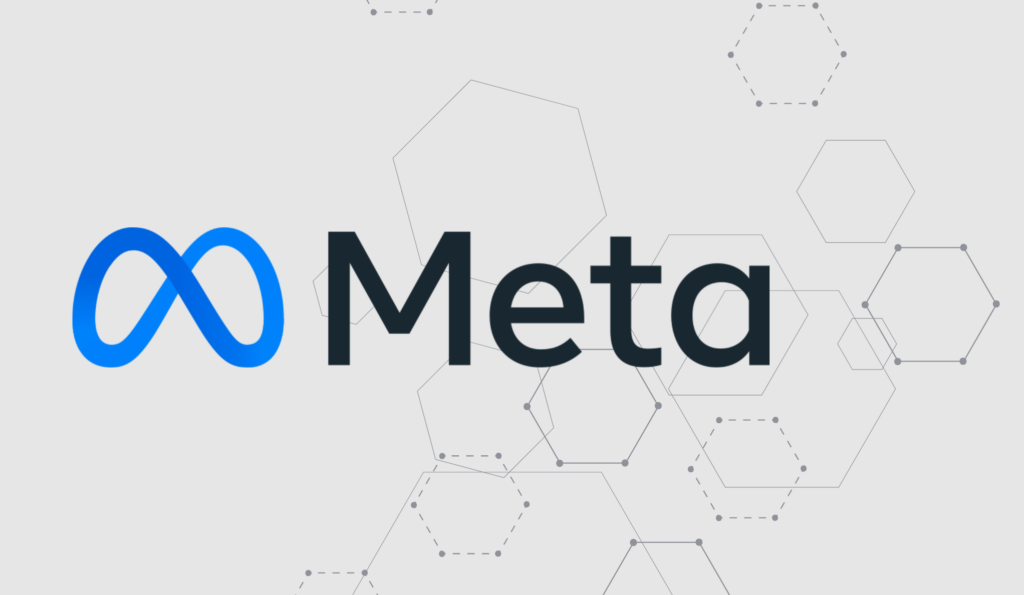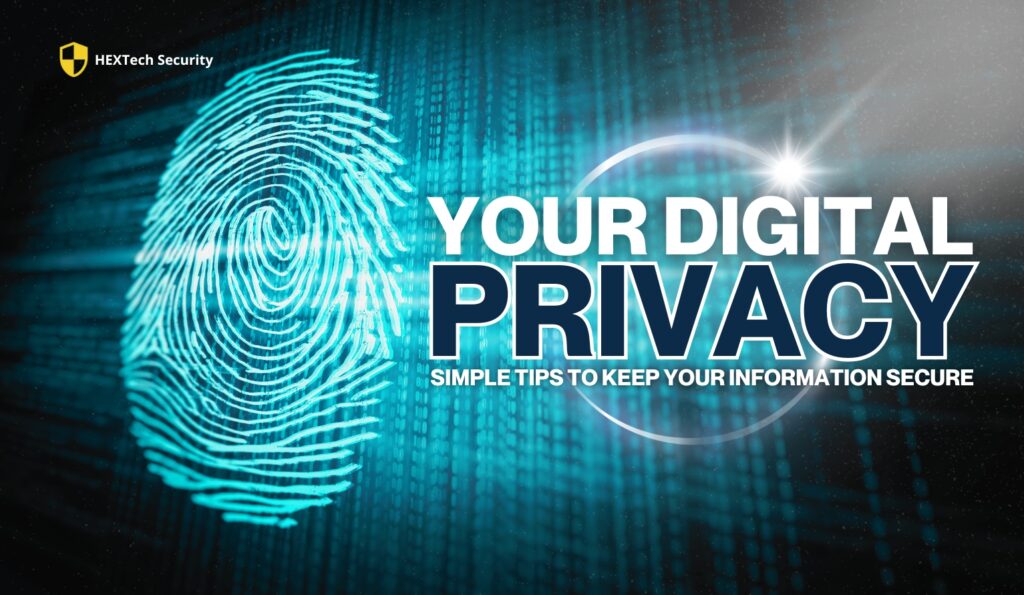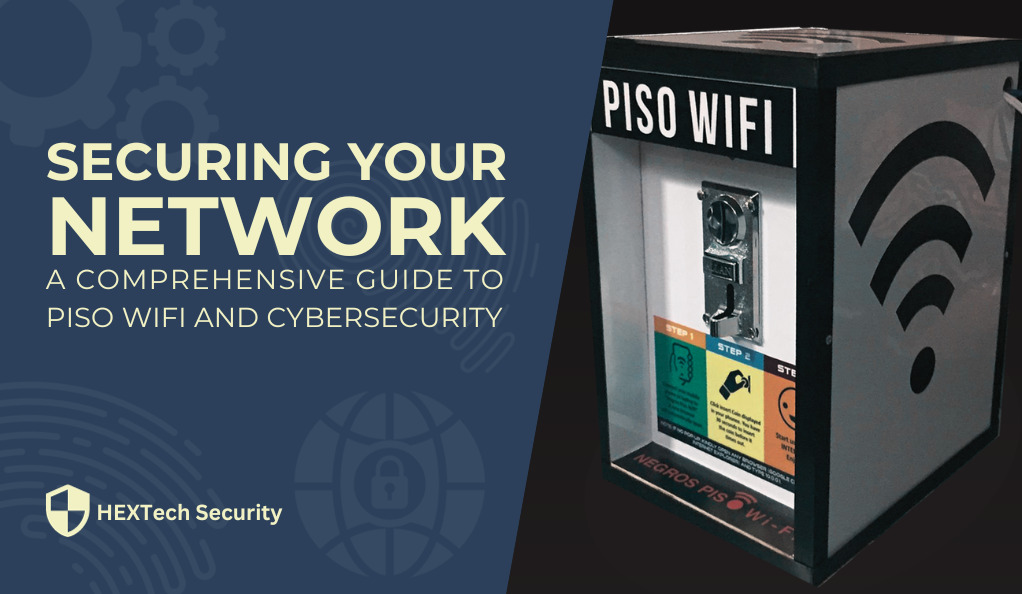The global pandemic not only changed the way we live but also revolutionized the way we work. As companies around the world swiftly transitioned to remote work setups, a new era of work culture emerged: the Work-from-Home (WFH) era. This shift, while offering flexibility and safety during uncertain times, also brought with it a host of challenges, one of which is the rise of surveillance tools in the WFH setup.
The Shift to Remote Work
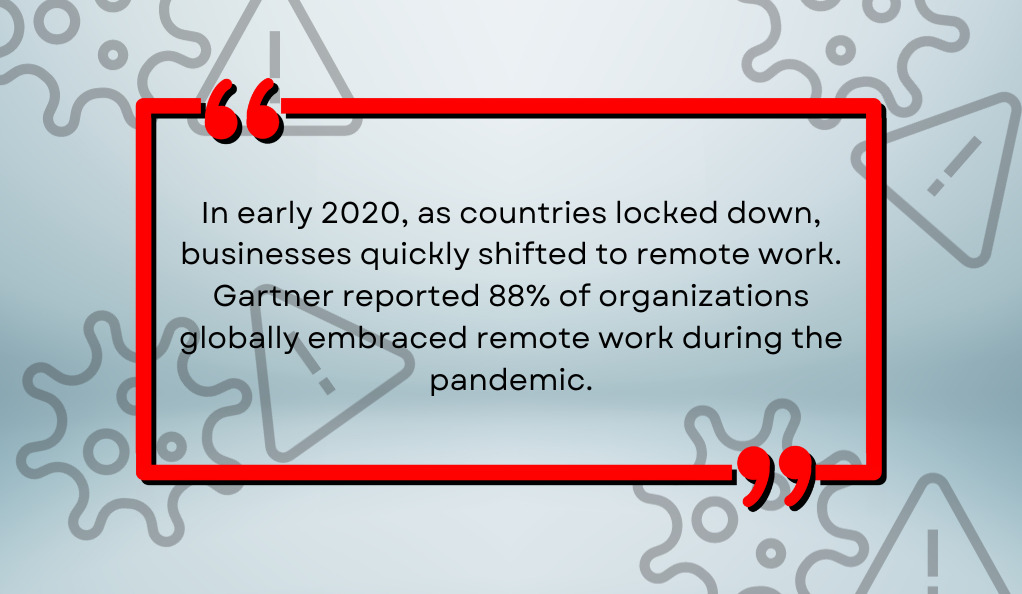
The Rise of Surveillance Tools
With this massive shift, ensuring productivity and accountability became paramount for employers. Enter the world of digital surveillance. Companies began to employ a range of tools designed to monitor employee activities during work hours. These tools could track keystrokes, take periodic screenshots, and even use facial recognition to ensure that the employee was at their desk.
While some argue that these tools are necessary to maintain the same level of productivity as in-office setups, others believe they infringe on employee privacy and well-being. The debate is ongoing, but one thing is clear: surveillance in the WFH era is a topic that cannot be ignored.
The Technology Behind WFH Surveillance
As the demand for remote work surged, so did the market for surveillance technologies tailored to this new environment. These tools, designed to ensure productivity and protect company assets, employ a range of sophisticated techniques to monitor employees. Let’s explore some of the most prevalent technologies in use today.
Keystroke Tracking and Screenshots
One of the most basic forms of digital surveillance, keystroke tracking, records every key pressed by an employee during work hours. This allows employers to monitor not just the amount of work being done but also the content of that work. Some tools even go a step further by taking periodic screenshots, providing a visual record of an employee’s activities.
| Tool | Features |
|---|---|
| KeyLog Pro | Keystroke recording, periodic screenshots |
| WorkSight Monitor | Real-time activity tracking, screenshot intervals |
| OfficeGuardian | Keystroke logs, application usage reports |
Popular keystroke and screenshot monitoring tools.
Facial Recognition and AI-Enabled Monitoring
The advancements in Artificial Intelligence (AI) have paved the way for more sophisticated surveillance methods. Some tools now employ facial recognition technology to ensure that the employee is present at their workstation. This means that if an employee steps away or if someone else sits in front of the computer, the system can detect it.
Beyond mere presence, AI-enabled tools can analyze an employee’s facial expressions to gauge their level of engagement or even their emotional state. While this can provide insights into an employee’s well-being, it also raises significant privacy concerns.
| Tool | Features |
|---|---|
| FaceTrack | Facial recognition, engagement analysis |
| EmoSense | Emotion detection, productivity insights |
| AIWatch | Presence detection, real-time alerts |
Leading facial recognition and AI monitoring tools.
The Blurring Boundaries Between Work and Home
With these surveillance tools in place, the lines between professional and personal life begin to blur. The very space that was once a sanctuary for relaxation and family time is now under the watchful eye of employers. This raises the question: How much monitoring is too much? And at what cost to the employee’s mental health and well-being?
The Impact of Surveillance on Employees
As surveillance tools become more integrated into the remote work landscape, understanding their effects on employees is crucial. While these tools aim to ensure productivity, their impact extends far beyond mere work output.
Psychological Effects of Constant Monitoring
Being under constant surveillance can take a toll on an employee’s mental well-being. The knowledge that every keystroke is recorded, every screen activity captured, and even facial expressions analyzed can lead to heightened stress and anxiety levels. Employees may feel that their privacy is invaded, leading to feelings of mistrust towards their employers.
A study by the University of California found that employees under surveillance reported higher levels of fatigue, stress, and anxiety compared to those who weren’t monitored. This constant “big brother” oversight can diminish job satisfaction and even lead to burnout.
The Challenge of Maintaining Work-Life Balance
In a traditional office setting, once an employee leaves the office, they can disconnect from work. However, in a remote setting, especially with surveillance tools in place, this boundary becomes blurred. Employees might feel compelled to work longer hours, fearing that taking breaks or stepping away might be perceived as unproductivity.
Moreover, with tools that track application usage, employees might hesitate to take short breaks, like checking personal emails or browsing the web, activities that in a regular office might equate to taking a coffee break or chatting with a colleague.
Case Studies: Negative Experiences of Employees Under Surveillance
- Anna, a content writer: “Knowing that my screen could be captured at any moment made me anxious. I found myself overthinking every action, even hesitating to open a new tab to listen to music.”
- Raj, a software developer: “The facial recognition tool our company used would send alerts if I wasn’t detected for a certain period. It became problematic when I was deep in thought, working out a problem, and not directly looking at the screen.”
- Linda, a customer support agent: “The AI tool gauged our emotions during calls. It felt invasive, knowing that my emotional reactions were being analyzed and potentially judged.”
These real-life experiences highlight the need for a balanced approach to surveillance, one that ensures productivity without compromising employee well-being.
Benefits of WFH Surveillance for Employers
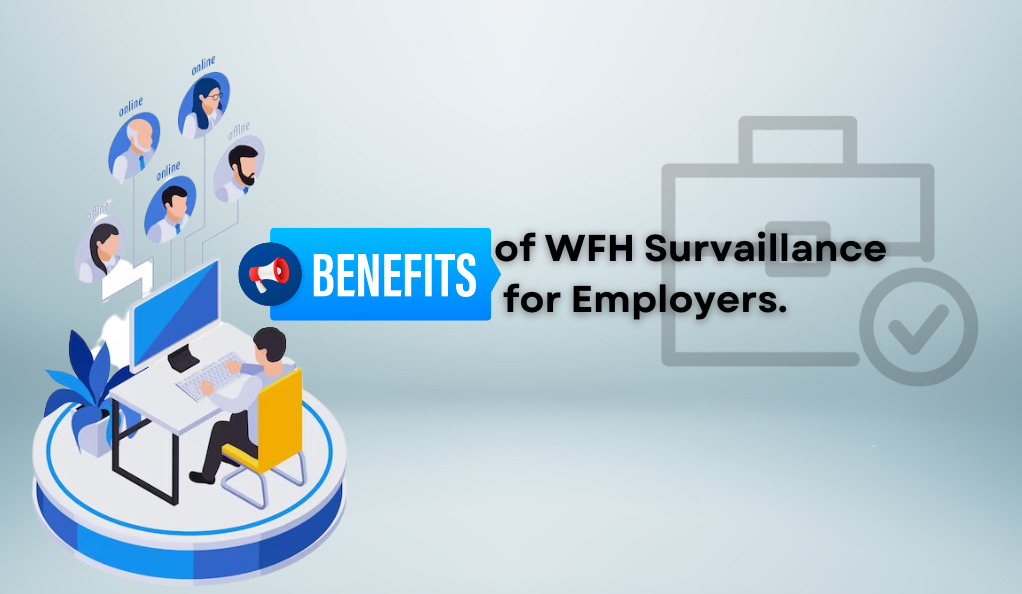
While the concerns surrounding employee surveillance are valid, it’s essential to understand the motivations behind its adoption. For many employers, these tools offer a way to navigate the uncharted waters of remote work, ensuring business continuity and productivity.
Ensuring Productivity and Accountability
In a traditional office setting, managers can visually assess if employees are at their desks working. In a remote setup, this visual cue is absent. Surveillance tools offer a digital equivalent, providing data on when employees are active, the tasks they’re working on, and their overall productivity levels.
For instance, a company might notice that a particular team’s output has decreased. Using surveillance data, they can pinpoint if the decline is due to reduced active hours, frequent breaks, or other factors, allowing for targeted interventions.
Data-Driven Insights into Employee Performance
Beyond mere surveillance, these tools offer a wealth of data that can be analyzed for performance insights. For example, keystroke logs can reveal which tasks consume the most time, while application usage reports can show which tools are most frequently used.
By analyzing this data, companies can identify bottlenecks, streamline workflows, and even offer targeted training to employees. For instance, if an employee spends a significant amount of time on a particular software, it might indicate a need for additional training or a more user-friendly tool.
Protecting Company Assets and Information
With employees accessing company data from various locations and devices, security becomes paramount. Surveillance tools can help monitor for any unauthorized access or suspicious activities, ensuring that sensitive company information remains protected.
For instance, if an employee accesses a confidential file outside of regular working hours or from a new device, the system can flag this activity for review. This not only protects the company’s assets but also ensures compliance with various data protection regulations.
The Backlash: When Surveillance Backfires
While the intentions behind implementing surveillance tools might be to ensure productivity and protect company assets, there are instances where these measures can backfire. Let’s explore some of the potential pitfalls and real-world consequences of excessive surveillance.
Decreased Employee Morale and Trust
Trust is a foundational element in any employer-employee relationship. When employees feel that they are constantly being watched, it can erode this trust. The sentiment that the company doesn’t trust its employees to do their jobs without constant oversight can lead to decreased morale. Over time, this can result in reduced productivity—the very thing the surveillance tools were meant to enhance.
Legal Implications and Privacy Concerns
Different countries and regions have varying regulations concerning employee privacy. Overstepping these boundaries can lead to legal repercussions for companies. For instance, in the European Union, the General Data Protection Regulation (GDPR) mandates that employees be informed about any monitoring and that the data collected be used responsibly.
Moreover, employees might have concerns about how their data is being used and stored. Without clear communication and transparency, this can lead to mistrust and potential legal challenges.
Real-life Instances Where Excessive Monitoring Harmed Companies
- TechCorp’s PR Disaster: A leading tech company, TechCorp, faced significant backlash when it was revealed that they used AI tools to analyze employee emotions during virtual meetings. The public outcry and subsequent employee protests led to a drop in their stock prices and a tarnished brand image.
- FinServe’s Legal Woes: FinServe, a financial services firm, faced a class-action lawsuit when employees found out that personal, non-work related activities were being monitored without their knowledge. The lawsuit cost the company millions and led to a review of their surveillance policies.
- EduTech’s Talent Drain: EduTech, an ed-tech startup, saw a significant portion of its top talent resign after implementing strict surveillance measures. The employees cited an “invasion of privacy” and a “toxic work culture” as reasons for their departure.
Striking a Balance: Surveillance vs. Employee Experience
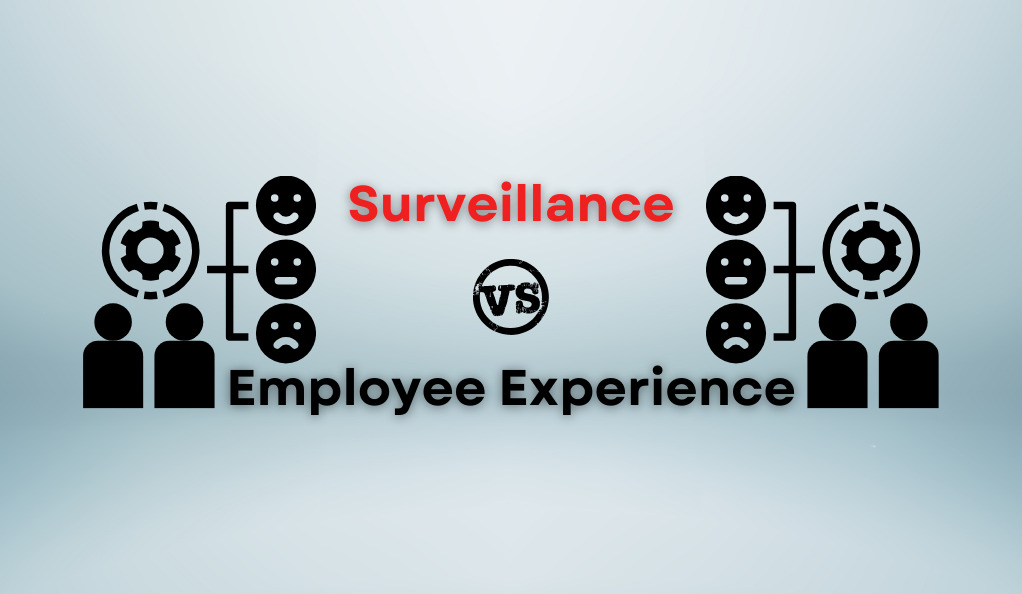
In the age of remote work, striking the right balance between ensuring productivity and respecting employee privacy is more crucial than ever. Companies need to navigate this delicate balance to foster a positive work environment while achieving their business objectives.
The Importance of Transparent Communication
Before implementing any surveillance tool, companies should communicate their intentions clearly to their employees. This includes:
- Explaining the reasons for the surveillance.
- Detailing what will be monitored and what won’t.
- Assuring employees that personal, non-work related activities will remain private.
- Providing avenues for feedback and concerns.
By being transparent, companies can alleviate many of the fears and concerns associated with surveillance.
Setting Clear Boundaries and Expectations
It’s essential to define the boundaries of surveillance. This means setting clear working hours outside of which monitoring won’t occur, ensuring that personal devices aren’t inadvertently monitored, and giving employees the option to turn off surveillance tools during breaks or personal time.
Additionally, companies should set clear expectations regarding work output rather than hours logged. This shift in focus from time to task completion can reduce the perceived need for constant monitoring.
Alternatives to Intrusive Monitoring
Instead of relying solely on surveillance tools, companies can explore alternative methods to ensure productivity:
- Regular Check-ins: Managers can have weekly or bi-weekly check-ins with their teams to discuss progress, challenges, and provide support.
- Employee Self-reporting: Allow employees to report their tasks and accomplishments. This not only reduces the need for surveillance but also fosters a sense of responsibility.
- Feedback Mechanisms: Implementing regular feedback sessions where employees can voice their concerns or provide suggestions can create a more open and trusting environment.
The Future of WFH Surveillance
As we navigate the post-pandemic world, the landscape of remote work and its associated surveillance is bound to evolve. Here’s a glimpse into what the future might hold:
Predictions for Post-Pandemic Work Setups
- Hybrid Work Models: Many companies are likely to adopt a hybrid model, where employees split their time between home and the office. This model might reduce the reliance on surveillance tools, as in-person interactions increase.
- Employee Autonomy: As companies become more accustomed to remote work, there might be a shift towards granting employees more autonomy, focusing on results rather than monitoring methods.
- Data Privacy Regulations: With the increasing use of surveillance tools, we can expect stricter data privacy regulations to be put in place, ensuring that employee rights are protected.
The Role of AI and Machine Learning in Shaping Surveillance Tools
The advancements in AI and machine learning will continue to shape the future of WFH surveillance:
- Predictive Analysis: Instead of just monitoring, future tools might predict when an employee is likely to be most productive or when they might need a break, optimizing work schedules.
- Personalized Feedback: AI could provide employees with personalized feedback on their work patterns, helping them improve their efficiency.
- Ethical Monitoring: AI could be programmed to ensure ethical monitoring, automatically turning off during non-work hours or when personal applications are in use.
Ethical Considerations and the Path Forward
As technology continues to advance, ethical considerations will play a pivotal role:
- Consent: It’s crucial that employees give informed consent before any monitoring takes place.
- Transparency: Companies should be transparent about the data being collected and its usage.
- Limitations: There should be clear limitations on the extent of surveillance, ensuring that personal boundaries are respected.
Conclusion
The global pandemic ushered in the Work-from-Home era, reshaping our understanding of work and introducing the complexities of surveillance in remote settings. While monitoring tools provide valuable insights into productivity, they also raise concerns about privacy, trust, and the overall well-being of employees. As companies navigate this new landscape, transparency and respect must be at the forefront, ensuring that while business objectives are met, the human element remains prioritized.
The future of remote work will likely see a blend of technological advancements and ethical considerations. As AI and machine learning continue to influence surveillance tools, the emphasis should be on informed consent, clear boundaries, and a focus on results rather than methods. By striking this balance, companies can cultivate a positive work environment that champions both efficiency and employee welfare.


